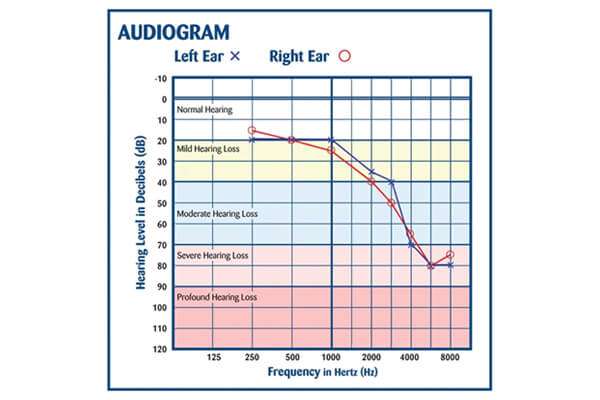
In the New Year, resolutions start to emerge. Will you lose 10 pounds this year? Quit your job? Reconnect with old friends? While you're at it, add another to the top of your list – getting a new audiogram. Hearing aids often go unnoticed (if working properly), so you may forget that just like glasses prescriptions, hearing aid audiograms should also be checked for accuracy. Having an up to date hearing aid will make the New Year even better!
Signs You Should Update
There are a few signs to look out for when thinking about updating your audiogram. First, consider the age of your hearing aid. If you purchased the hearing aid five or more years ago, not only has the technology improved, but also, your hearing may have worsened. Due to age, you may want to consider purchasing an entirely new pair if you have the funds. Next, if you experienced a shift in your work or home-life, you may want to check your audiogram. A new office or added family member in your home may shift the type and strength of hearing aid you need, so an audiologist or doctor should be informed. Another sign you should update your audiogram is a change in health. Many conditions and diseases affect the ear and therefore your hearing as well. If you notice any sounds seeming weaker or that you are once again missing out on sounds while wearing your current pair, it is definitely time to update your audiogram.Getting a New Audiogram
Many people do not even understand their original audiogram, so with a new audiogram, it might be time to dig a little deeper into their meaning. There are generally two axes – one for decibel and one for frequency. The decibel plot ranges from very soft to very loud sounds, and the frequency ranges from low to high. You may have different hearing sensitivity at different frequencies, something that can change over time, which is how your hearing aid is specialized to you. The audiologist will play sounds and mark on the graph what sounds you could hear, then connect the points to form a line. The audiologist can then graph the old audiogram’s points on top of the new audiogram’s points. This makes it easy to compare hearing at different times in your life.Reprogramming Hearing Aid
Now that you have an updated audiogram, you should update your hearing aid. Whoever originally programmed your hearing aid should be able to reprogram it to your specifications. At Audicus, you simply have to complete a Reprogramming Survey, then send back your hearing aids to be adjusted. You will receive your improved pair back in the mail in a timely fashion, and the best part – reprogramming is free for the life of your hearing aid! Reprogramming through other hearing aid companies may be expensive, and insurance does not always cover this fee, so check to see if it is worth it to reprogram or simply buy a new pair.By: Diana Michel
The above is the interpretation of How Often Should You Get a Hearing Test? provided by Chinese hearing aid supplier Shenrui Medical. Link https://www.srmcm.com/Blog/How_Often_Should_You_Get_a_Hearing_Test.html of this article is welcome to share and forward. For more hearing aid related information, please visit Blog or take a look at our Hearing aids products















